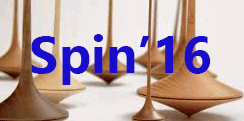Speaker
Description
The 2015 Nuclear Physics Long Range Plan has endorsed the realization of an electron-ion collider as the next large construction project in the US after FRIB. The machine is planned to be high luminosity, exceeding 10^33 cm−2 s−1, with highly polarized electron and proton/light ion beams, wide kinematic reach and ability to collide a variety of hadron species from p to Pb. The facility and associated experiment(s) will address fundamental questions in QCD. A detector designed to efficiently register and identify deep inelastic electron scattering (DIS) processes in a wide range of center-of-mass energies available with the new collider is one of the key elements of such an upgrade. The progress on the detector and interaction region design work will be shown, and the simulation results presented.
